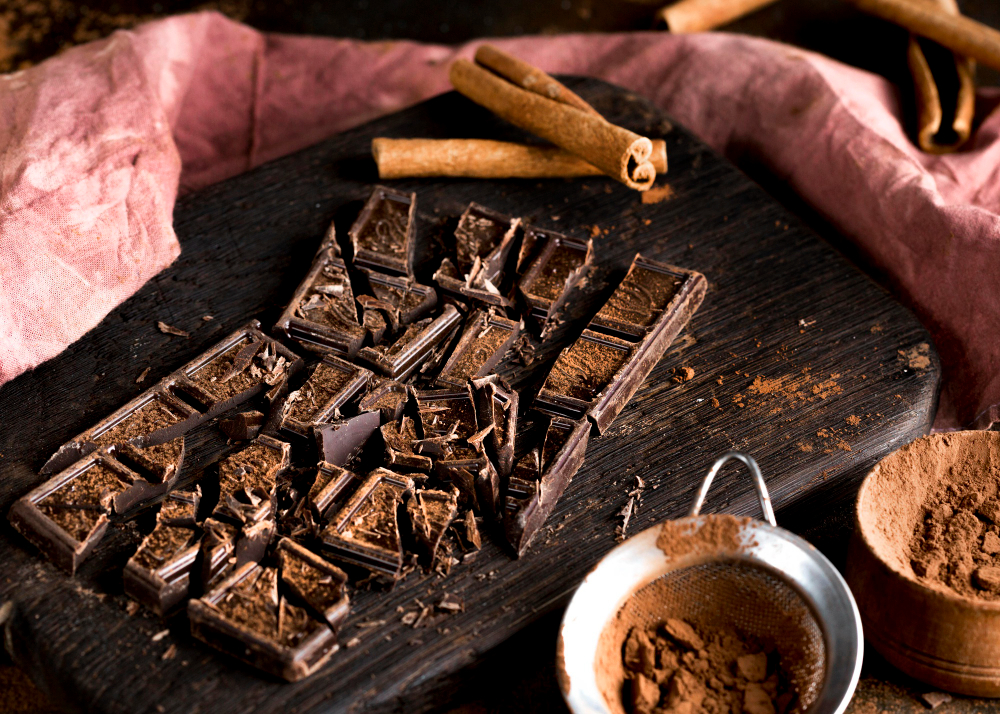Chocolate is one of the most beloved treats around the globe, captivating the hearts and taste buds of people from all walks of life. However, the journey of chocolate from bean to bar is a fascinating process that involves several meticulous steps. In this blog, we will explore the entire journey of chocolate production process, from the cultivation of cacao beans to the creation of your favorite chocolate bars.
The Origins of Chocolate
The story of chocolate begins with the cacao tree, scientifically known as Theobroma cacao. This tree thrives in tropical regions near the equator and is native to Central and South America. The word Theobroma translates to “food of the gods,” a testament to the revered status chocolate has held throughout history. Today, chocolate has evolved in many ways, including the creation of sugar free chocolate, allowing those with dietary restrictions or health-conscious individuals to enjoy the rich flavors of cacao without compromising on taste or sweetness.
The Historical Significance of Cacao
The use of cacao dates back over 3,000 years to ancient civilizations such as the Mayans and Aztecs, who not only consumed cacao as a beverage but also used it in religious rituals and as a form of currency. The beans were often ground into a paste and mixed with water, spices, and sometimes honey to create a bitter drink.
Cultivation of Cacao Beans
The Growing Process
Cacao trees require a specific climate to flourish, with temperatures ranging from 20 to 30 degrees Celsius and high humidity. They typically grow in shaded environments, often beneath taller trees in tropical forests.
The cacao pods, which contain the precious cacao beans, grow directly from the trunk and branches of the tree. Each pod can take anywhere from five to six months to mature. Once harvested, the pods are split open to reveal the sweet, white pulp surrounding the cacao beans.
Fermentation
After extraction, the beans are fermented for several days, a crucial step in developing their flavor. During fermentation, natural yeasts and bacteria break down the sugars in the pulp, producing alcohol and acids that enhance the beans’ flavor profile. This process also removes the bitterness associated with raw cacao.
Drying
Once fermented, the cacao beans are spread out under the sun to dry. This step reduces the moisture content, preventing mold growth and preparing the beans for shipping. Proper drying is essential, as it significantly impacts the final flavor of the chocolate.
From Beans to Chocolate: Processing Steps
Roasting the Beans
Upon reaching chocolate manufacturers, the dried cacao beans are roasted to bring out their rich flavors. The roasting temperature and time can vary depending on the desired flavor profile. This process also makes it easier to separate the outer shell from the inner nibs.
Winnowing
Winnowing is the process of removing the outer shell from the cacao beans, leaving behind the cacao nibs. This is typically done using a machine that cracks the beans and blows away the lighter shells. The resulting nibs are the heart of chocolate production.
Grinding
The cacao nibs are then ground into a thick paste known as chocolate liquor or cocoa mass. Despite the name, chocolate liquor contains no alcohol. This paste can be further processed to separate cocoa solids from cocoa butter, which is the fat extracted from the nibs.
Conching
Conching is a crucial step in chocolate production that enhances the texture and flavor. During this process, the chocolate liquor is continuously mixed and aerated in a conching machine. This allows volatile acids to evaporate, resulting in a smoother, more refined chocolate. The duration of conching can vary, ranging from a few hours to several days.
Tempering
Tempering is a technique used to stabilize the cocoa butter crystals, resulting in chocolate that has a glossy finish and a satisfying snap when broken. The chocolate is carefully heated and cooled in a specific manner to encourage the formation of stable crystals.
Creating the Final Product
Mixing Ingredients
Once tempered, the chocolate is ready for further mixing. Depending on the type of chocolate being produced (dark, milk, or white), additional ingredients such as sugar, milk powder, and flavorings may be added.
- Dark Chocolate: Contains cocoa solids, cocoa butter, and sugar.
- Milk Chocolate: Includes cocoa solids, cocoa butter, sugar, and milk powder.
- White Chocolate: Composed of cocoa butter, sugar, and milk powder, but contains no cocoa solids.
Molding and Cooling
After mixing, the chocolate is poured into molds to create bars, shapes, or other confections. The molds are then cooled to allow the chocolate to harden. This cooling process can take several hours, depending on the size and thickness of the chocolate pieces.
Packaging
Once cooled and set, the chocolate is removed from the molds and packaged for sale. Packaging plays a crucial role in preserving the freshness and quality of chocolate. Many manufacturers choose eco-friendly materials to appeal to environmentally conscious consumers.
The Global Chocolate Industry
Fair Trade and Ethical Sourcing
The chocolate industry has faced criticism over the years regarding ethical sourcing and fair trade practices. Many cacao farmers work in poor conditions and receive low wages for their labor. In response, several organizations promote fair trade practices, ensuring that farmers are compensated fairly and work under humane conditions.
Consumers are increasingly seeking out brands that prioritize ethical sourcing, leading to a rise in fair trade-certified chocolate products.
The Impact of Climate Change
Climate change poses a significant threat to cacao production, with rising temperatures and changing rainfall patterns affecting the growth of cacao trees. This has led to concerns about the future availability of high-quality cacao beans. Sustainable farming practices and research into climate-resilient cacao varieties are essential to ensure the longevity of chocolate production.
The Joy of Chocolate
Chocolate as a Treat and Comfort
Chocolate is more than just a sweet indulgence; it has cultural significance in many societies. It is often associated with celebrations, holidays, and special occasions. From Valentine’s Day chocolates to Easter eggs, chocolate plays a central role in our rituals and traditions.
The Health Benefits of Chocolate
In moderation, chocolate, particularly dark chocolate, can have several health benefits. Rich in antioxidants, it has been linked to improved heart health, enhanced mood, and even better cognitive function. The key is to enjoy chocolate in moderation, savoring its rich flavors while reaping its potential health benefits.
Conclusion
The journey of chocolate from bean to bar is a complex process involving cultivation, processing, and ethical considerations. As consumers, understanding this journey allows us to appreciate chocolate on a deeper level and make informed choices about the products we consume. Whether you prefer dark, milk, or white chocolate, each bite represents the hard work and dedication of countless individuals involved in its production.
So the next time you indulge in a piece of chocolate, remember the intricate journey it has taken to reach your hands. Enjoy your chocolate, knowing that it is not just a treat, but a product of rich history and culture, crafted with care and passion.
Also Read: Culinary Journeys: A Food Lover’s Guide to Global Cuisine




